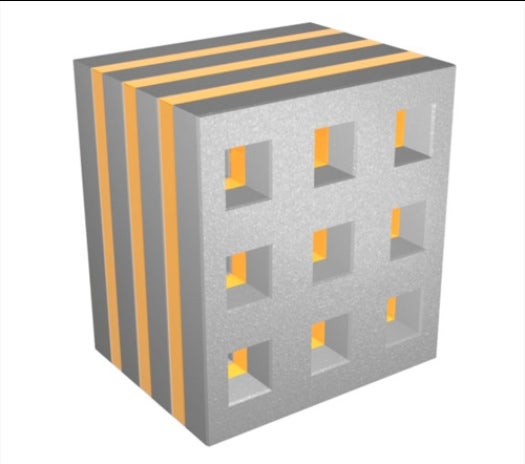‘Nanofishnet’ Could Be the First Metamaterial to Impossibly Bend Light in the Visible Spectrum
Metamaterials hold the elusive promise of the true invisibility cloak, one that bends light right around objects to make them...

Metamaterials hold the elusive promise of the true invisibility cloak, one that bends light right around objects to make them invisible to viewers. But most metamaterials with any kind of potential can only be fabricated in very small sizes, and even the ones that work well–and there are a few–generally don’t work in the visible spectrum. But researchers from Spain and the UK have reported that they have constructed what may be the first practical metamaterial that works in the visible range.
The material was designed with optical switching in mind–sub-picosecond pulsing of light in fiber optics networks or in highly tuned pulsing lasers–but the researchers themselves are convinced that its layered structure could be scaled up into usable, practically-sized objects. Everyone in the materials science community isn’t so optimistic, but the fact that it works at all in the visible range marks something of a breakthrough in the field.
Visible light has been a particularly tough nut to crack when it comes to metamaterials, which essentially bend light unnaturally to achieve a desired effect. Light waves in the visible spectrum tend to degrade to nothing after passing through materials just a fraction of a wavelength thick, so it’s tough to make a metamaterial that can bend light in a predetermined way without also losing the visible light wave altogether.
The UK/Spanish team (from King’s College London and the Valencia Nanophotonics Technology Center, respectively) overcame this through a novel layered construction of silver and hydrogen silsesquioxane (a type of glass). Using a focused ion beam, they punched tiny holes through the layers to create a structure they refer to as a “nanofishnet.” This combination of materials, layering, and nanofishnet structure allows the material to create the necessary negative magnetic permeability (a necessary ingredient for metamaterials that you can learn more about here) in the red and near-infrared parts of the spectrum.
By varying the size of the holes in the nanofishnet the team was able to adjust the materials index of refraction, giving them some degree of freedom when it comes to “programming” the material for different kinds of light. So while the team hasn’t created the wundermaterial that will enable our invisibility-cloaked future, they have created a metamaterial that works in one sliver of the spectrum and that could perhaps be cajoled into working in other slivers as well. Click through to IEEE Spectrum for a much more detailed explanation of this.